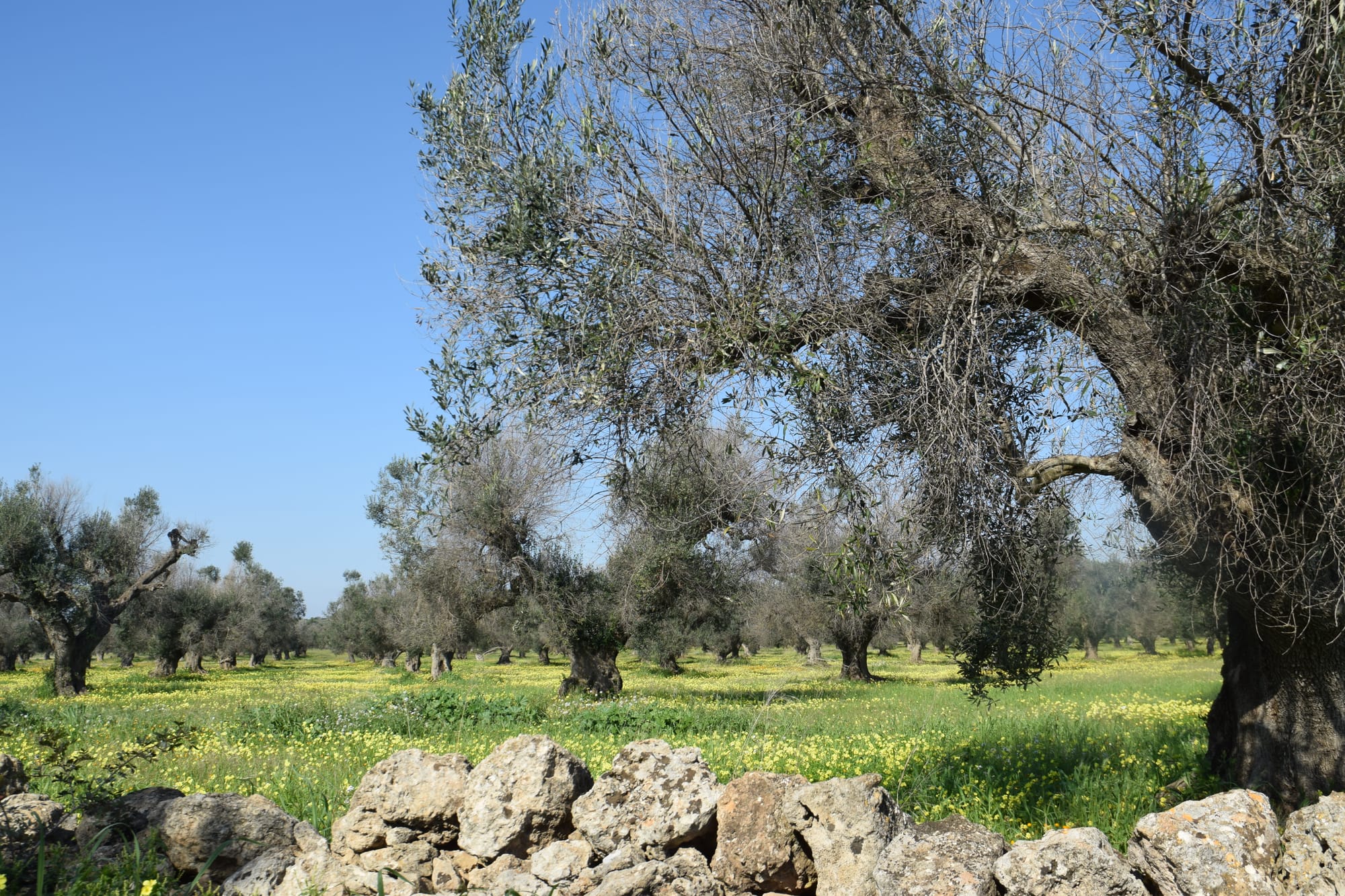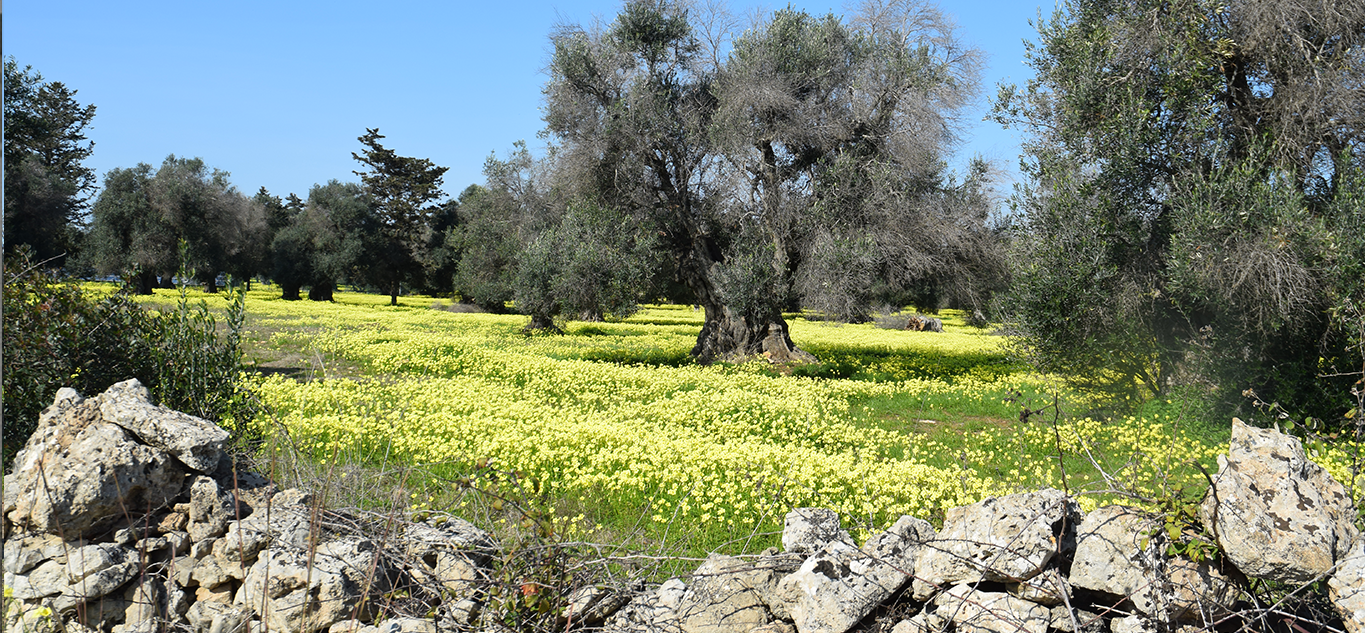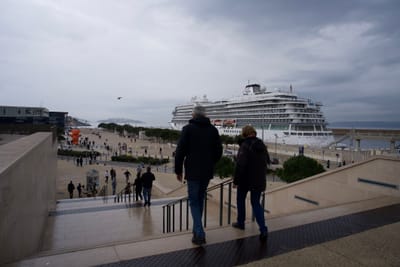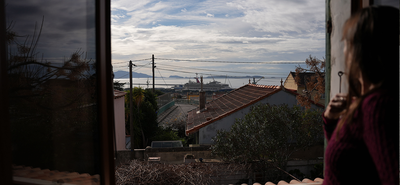- by Vittoria Torsello
LECCE, Italy — When you picture a desert, you often imagine vast stretches of sand beneath a scorching sun and no vegetation or water for miles. This is what Sicily has increasingly come to evoke in recent summers. The island is one of the Italian regions with the highest risk of drought and 2024 offered a preview of what this could entail, as highlighted by the Italian Institute for Environmental Protection and Research, ISPRA. Primarily driven by the climate crisis, this phenomenon is fueled by rising temperatures and increasing irregular rainfalls. While many locals view the land as deteriorating, others see it as the perfect canvas for the next luxury tourist attraction. At the heart of this tension is water: the region's most vital resource and also the most exploited, especially by the booming tourism industry.
“When we make a destination accessible only to the wealthy, we must also question whether the local infrastructure can withstand the pressure,” says Federica Epifani, geographer at Unisalento. This is the case with luxury hotels, a booming business across the Mediterranean, where the costs are unaffordable for the local population. A case study of a 5-star hotel in Tenerife, Spain, revealed that despite implementing water-saving measures, many hotels still consume more than the international benchmark of 140 liters (37 gallons) per guest per night, demonstrating that luxury accommodations continue to have high water usage. In fact, according to the World Sustainable Hospitality Alliance, a hotel can consume an average of 1,500 liters (396 gallons) per room daily. This is an incredibly high figure when one considers that domestic water use in various European countries is between 40 and 50 cubic meters (between 1,412 and 1,765 cubic feet) per inhabitant. Many locals are deeply concerned about how their land is being depleted of essential resources. “They make a desert and call it tourism,” reads a blog post by the Sicilian activists' collective Antudo, which brings together social movements advocating for the self-determination of Sicilian territory and its resources.
The tension over who gets to use water in drought-prone areas is widespread across the Mediterranean, where government and private firms are pushing a brand of tourism that caters to the rich. Investment firm Blackstone has invested over 500 million euros (about 585 U.S. dollars) in southern European hotels over the past year, given the global rise in individuals with high net worths. This expansion is already evident in countries such as Albania and Greece. However, beyond diverting scarce natural resources away from local communities, experts increasingly question whether this model delivers meaningful, long-term benefits to them.

“Luxury tourism itself doesn't necessarily mean better tourism or better opportunities for a region. Like anything, it depends on how it's implemented,” says Chiara Rabbiosi, a researcher at University of Padua. “But if it becomes the only model of development for a territory, it can be risky.”
Luxury resorts are now being glorified, especially by TV productions such as The White Lotus, which counted 4.8 million viewers in its third season. In the second season, the show takes place in a Sicilian resort called San Domenico Palace, once a 14th-century monastery on the slopes of Mount Etna overlooking the Ionian Sea. Transformed into a grand hotel in 1896, it was recently reopened under the prestigious Four Seasons brand.
While the show transports viewers to a world of opulence, its real-life consequences are far less glamorous. Many now refer to the “White Lotus effect” to describe the sharp increase in tourism in the area. Following the show's finale in December 2022, travel searches for Sicily surged by 50 percent and there was a 300-percent increase in travel demand to the island within 90 days of the season airing, compared to the same period the previous year. Destinations like Taormina and Noto, prominently featured in the series, saw a particularly heightened interest. However, since then, the region has grappled with overcrowding and infrastructure that cannot keep up. When asked about this, San Domenico Palace managers stated that they refer to ESG practices, financial, environmental, and social criteria used to assess how sustainable a company is and what its impacts are. However, data on consumption and measures for improvement are not explicitly disclosed. At the same time, HBO disclosed a note detailing the economic impact of 100 days of filming in Sicily without addressing whether any measures were being adopted to avoid wasting water resources or to limit the impact on local communities beyond appointing a sustainability coordinator to ensure that HBOGreen policies were properly implemented on set.
According to regional data, tourism in Sicily has kept growing in recent years to the point that some locals fear the risk of overtourism, a situation where an excessive number of tourists visit a destination simultaneously, placing unsustainable pressure on the environment, local communities and infrastructure, like in San Vito Lo Capo, nearly 300 kilometers (186 miles) west of Taormina.
“San Vito’s infrastructures cannot cope with the recent surge in tourism,” says Maria Laura Geraci, a San Vito Lo Capo resident who, from 2019 to 2022, opposed the construction of a seaside resort that, according to local activists, would have accelerated beach erosion. “We don’t have a proper water supply system. We’re still relying on water trucks. The local authorities are making some moves to improve it, but we shouldn’t be chasing constant growth in tourist numbers. Infrastructure should certainly be upgraded, but there also needs to be a clear regulation of visitor flows.”
Even though Sicily has many natural water sources, the climate crisis still poses a severe threat to a vulnerable system characterized by leaky pipes, outdated infrastructure and a chronic lack of investment. This is further compounded by highly fragmented management, with water governance divided among multiple regional and municipal agencies, making coordinated action difficult. For locals, this is nothing new and it worsens every summer. According to Italy’s National Statistics Institute, in 2022, Sicily lost 51.6 percent of the water introduced into the distribution network for authorized use, 339.7 million cubic meters (12 million cubic feet) of water wasted.
As a result, in 2024, over one million residents across 93 cities faced water rationing, with some areas forced to reduce consumption by up to 45 percent. The agricultural sector suffered losses exceeding 1 billion euros (1.17 billion dollars) due to insufficient water for crops and livestock. Cities like Agrigento, on the southwest coast of Sicily, have been forced to turn away tourists due to water shortages. Some hotels and guesthouses have struggled to maintain a steady water supply, raising concerns about the long-term sustainability of tourism under current climate crisis scenarios.
“My impression is that the same extractivist logic is being repeated, one that has defined development strategies in the South of Italy since the post-war period,” says Epifani. “When I speak of ‘extractivist logic,’ I refer to large-scale investments meant to stimulate the economies of socially and economically vulnerable regions. Tourism, especially of this kind, does not necessarily generate widespread or lasting benefits for local communities.”
One such scenario is unfolding in another southern Italian region praised for its unspoiled landscapes and beaches: Puglia. By 2027, it is expected to host La Maviglia, an ultra-luxury resort with an estimated investment of 200 million euros (234 million dollars). Spread across 202 hectares of orchards and olive groves near the Ionian coast, the resort promises an 18-hole golf course designed by Oppenheim Architecture, a Miami-based firm renowned for its “socially and environmentally conscious architecture”, along with 70 private suites, 20 boutique hotel rooms, 35 lavish villas, a 5,000-square-meter (53,820-square-foot) spa and fine dining by acclaimed chefs. When asked through a Freedom of Information request for documents related to environmental impact, the company and the Puglia regional government denied them, citing confidentiality reasons.
“The project is top-down and was imposed without consultation,” says Simone Fusco, a Maruggio local resident. The ambitious project has benefited from Italy’s ZES Unica Mezzogiorno, a Special Economic Zone (SEZ) covering all of the country's southern regions. These zones are designed to boost economic development in historically underinvested areas by offering tax breaks, streamlined bureaucracy and other business incentives. The financier behind this project is Nicola Cortese, an Italian-Swiss entrepreneur. His Switzerland-based company, Ultimate Collection Ltd., operates in the luxury capital segment, focusing on investment and high-end hospitality development.

“In the news, they make it sound like a paradise, but in reality, there is nothing there,” says Angelo Chiego, whose land borders the Maviglia area. “They’re allowing construction in an area that is zoned as agricultural land.” Experts are sounding the alarm over the project's ecological impact. “Golf courses are infrastructure that requires significant land use and equally significant water consumption,” says Epifani, the Unisalento geographer. “And let’s not forget that ‘Puglia’ literally means ‘without water’, it is an arid region.”
Piero Lionello, professor of Oceanographic and Atmospheric Science at the University of Salento, echoes this concern: “These kinds of structures require a substantial amount of resources, especially water,” he says. “But in a future where water resources are steadily decreasing, sustaining this kind of irrigation becomes increasingly difficult.” Then, he adds: “Perhaps some of these developments use advanced water recycling and storage systems, which might help offset the impact, but that's not guaranteed.”
In these territories, described by Italy’s Prime Minister Giorgia Meloni as the “economic locomotive of Italy,” her government has outlined a vision for structural growth that sees the South as a playground for both regular and luxury tourism. But is this truly sustainable development, or simply a chance for elite investors to profit at the expense of local authenticity and environmental integrity?
Gianfranco Viesti, Professor of Applied Economics at the Department of Political Science, University of Bari, warns: “I have a very negative opinion of the possibility that these investments can be authorized in derogation of municipal and regional planning regulations. In these cases it would not be a question of simplification, but of authorizations being granted that should instead be denied.” The result, therefore, could be something unsustainable and unsuitable for the specific needs of the area, with the risk that these investments do not take into account local water limits or regional planning regulations. The project website talks about integration with the territory. In fact, a public road will be closed, notes Angelo Chiego. “You couldn’t ask for a better example of integration,” he says sarcastically.
In September 2024, the Puglia regional government suspended the resort’s approval, citing the absence of proper environmental and landscape assessments, reviews that the ZES mechanism had allowed the project to bypass. At the heart of the controversy is the environmental toll of golf courses, swimming pools, artificial lakes and water features, all of which demand massive water resources in a region already suffering from chronic drought. The controversy surrounding La Maviglia in Puglia highlights a broader trend: the expansion of luxury tourism under the banner of economic progress.
Marketing campaigns often paint these destinations as pristine escapes. Yet the construction of gated resorts, golf courses and private villas frequently erodes the local environment and increases pressure on water and energy supplies. As exclusivity grows for wealthy travellers, residents are left to grapple with this resource scarcity. The fundamental question remains: What is the actual cost of luxury, and who ultimately pays for it?
Top image: olive trees surrounded by dry-stone walls along the borders of La Maviglia. For centuries, farmers have built these walls to mark field boundaries, protect crops from the wind and separate cultivated land from grazing areas (Vittoria Torsello).
Editor’s Note: This story is part of the series “Beauties Under Siege,” which offers a preview of the magazine we have in mind. It was produced as part of the first edition of the Magmatic School of Environmental Journalism.


